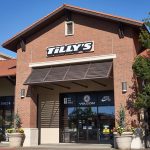Has Black Friday, the day after Thanksgiving that had been the historical tipping point for American retailers to start turning a profit for the year, become much ado about nothing for good? Before the leftovers are all gone, before the numbers are tallied for the Thanksgiving holiday weekend, and long before the holiday shopping season begins in earnest, the analysts are already suggesting that this once heralded day at retail has taken a back seat to a group of days that will be key indicators of retail health for the holidays.
The market was once able to gauge the success of the holiday selling season and therefore the year on the health of the retail business on the day after Thanksgiving and the Saturday and Sunday following. Now, thanks to the Internet and the consumers newfound propensity to purchase gift cards or to wait until the last minute to shop, any assessment of the holiday season must include Thanksgiving Day, Cyber Monday, and Christmas Eve.
Unfortunately, efforts to drive sales and maintain comp sales growth on Black Friday have apparently only led to deeper promotional discounting, flat sales, and frenzied shoppers vying for heavily discounted electronics that looked more like crowds in New Orleans after a hurricane rather than early shoppers filled with good cheer for the season.
Despite the hoopla associated with the day after Thanksgiving, the season has generally gone the way of the traditional back-to-school season, which has moved two to three weeks farther back into the fall. That trend will be further exacerbated in 2005, as the Saturday before Christmas, which is now the biggest shopping day of the year, is also Christmas Eve this year and adds an extra Saturday to the selling season before Christmas.
“While Black Friday is important to retailers, it's not always the best indicator for consumer shopping patterns during the remainder of the holiday season, which should allow the retail industry to continue feeling optimistic,” said Michael Niemira, chief economist for the International Council of Shopping Centers, in a published report. “With the extra Saturday this season, added to the continued influence of high energy prices, the consumer may just be waiting until later to begin their holiday spending.”
The impact of energy prices may end up being a wash in the early part of this holiday season, but could turn problematic as the season progresses and the full impact of higher natural gas and heating oil prices starts to be realized. While gasoline prices have fallen from their earlier all-time highs in September, consumers are now bracing for a potentially colder December and heating costs that are estimated to be 35% to 100% higher than last year.
Prior to this last weekend, Niemira was forecasting overall comparable store holiday sales to rise between 3.0% and 3.5% for November and December on top of a 2.3% gain in the same period last year. The National Retail Federation recently revised its holiday sales forecast due to “a recent flurry of healthy economic indicators including strong October retail sales and falling gasoline prices.” NRF now expects total holiday retail sales to increase 6.0% over last year to $439.5 billion, up from its previous forecast for a 5.0% gain for the season, marking the first time NRF has ever “officially upgraded” its forecast during the holiday season.
ShopperTrak reported that overall sales on Friday were relatively unchanged compared to a year ago, despite the sharper discounting that drove heavier traffic numbers in the early hours on Friday. The research group reported total sales on Friday were down 0.9% from a year ago.
“Although the Black Friday number is a bit flat, this may be misleading as we're comparing this to a very strong 2004 performance,” said Niemira in a published report after the Friday results were assessed. He went on to say that “holiday sales will be driven by price and promotional activities as consumers deal with higher gasoline prices and heating bills,” also indicating his belief that the retailers that compete on price will be the most successful.
But the busiest shopping day of the year will most likely be Christmas Eve this year. The Saturday before Christmas became the biggest annual shopping day about 15 years ago, according to Niemira. MasterCard International Inc. is predicting that the busiest hour of shopping this year will be 1 p.m. to 2 p.m. EST on December 24.
The market must also deal with the growing use of online shopping that is also throwing off the historical estimates.
Cyber Monday, as shop.org has christened the Monday following Thanksgiving, has quickly become one of the biggest online shopping days of the year as workers return to the workplace and take advantage of their employers high-speed connections to make their online purchases. But, as high-speed access proliferates throughout middle America and consumers upgrade computers at home, there is growing evidence that Thanksgiving day itself has become a key Internet shopping day as well.
According to the Shop.org/BizRate Research 2005 eHoliday Mood Study, 77% of online retailers said that their sales increased substantially last year on the Monday after Thanksgiving, a trend that is driving serious online discounts and promotions on Cyber Monday this year. According to a recent Shop.org survey, conducted by BIGresearch, more than one third of consumers, or 51.7 million people, said they will use Internet access at work to browse or buy gifts online this holiday season. But many online retailers werent waiting this year. According to Visa USA, e-commerce sales on Thanksgiving day on Visa-branded debit and credit cards was $205 million, an increase of 41% over Thanksgiving last year.
>>> Traditional retailers and the analysts that cover them must also face the new realities of the market that sees the Web take a bigger chunk of the business early on, while the increased use of gift cards pushes the actual purchase of goods into January instead of December, when most are purchased…













